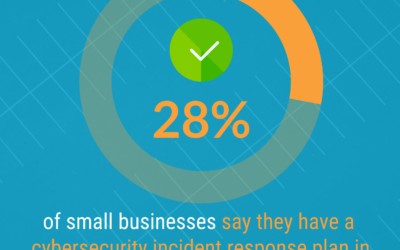The cybersecurity landscape of 2023 promises to be more complex and challenging than ever before. With the rapid growth of technology, cybersecurity threats will continue to evolve in innovative ways. To stay ahead of threats, it’s important for organizations and individuals to understand the latest cybersecurity trends. Here are 10 cybersecurity trends to watch out for in 2023:
1. Automated Risk Management:
Automation is becoming more prevalent in cybersecurity, allowing organizations to monitor and manage risks with greater speed and accuracy than ever before. With automated risk management, cybersecurity teams can analyze data quickly and respond rapidly to threats.
2. Cloud-Based Security:
As cloud computing continues to grow, cybersecurity solutions are shifting to the cloud as well. Cloud-based cybersecurity solutions provide an extra layer of protection against threats and make it easier for cybersecurity teams to access data from anywhere.
3. Cyber Insurance:
Organizations are increasingly turning to cyber insurance policies as a way to protect themselves against cybersecurity threats. Cyber insurance can provide financial compensation in the event of a breach or cyberattack.
4. Identity and Access Management (IAM):
IAM is becoming increasingly important as cybersecurity teams look to strengthen security protocols and ensure that authorized users are accessing sensitive data. IAM solutions help cybersecurity teams control user access levels, monitor user activity, and detect unauthorized logins.
5. AI-Powered Solutions:
Artificial intelligence is being used more frequently in cybersecurity tools, allowing for faster detection and response times to potential threats. AI-powered solutions are also being used to automate tasks such as patch management, reducing the burden on cybersecurity teams.
6. Cryptocurrency Security:
With the growing popularity of cryptocurrencies, cybersecurity teams are keeping a close eye on cryptocurrency security. The use of cryptography and blockchain technology can help cybersecurity teams protect digital assets from unauthorized access.
7. IoT Security:
As the Internet of Things (IoT) continues to grow, cybersecurity teams are focused on protecting connected devices from malicious actors. Organizations need to ensure that their networks and devices have strong cybersecurity measures in place, such as regular patching and authentication protocols.
8. Phishing Prevention:
Phishing remains one of the most common cybersecurity threats, with criminals using sophisticated tactics to trick users into sharing sensitive information. Advanced cybersecurity tools can help cybersecurity teams identify and block phishing attempts before they become successful.
9. Data Protection:
Data security is becoming more important as organizations collect and store larger amounts of data. To ensure data protection, cybersecurity teams need to focus on encryption, authentication protocols, and access control measures.
10. Cyber Security Awareness Training:
In order to protect against cybersecurity threats, cybersecurity teams must have effective training programs in place. Cyber security awareness training educates users on potential threats and helps them recognize suspicious activity so they can take action quickly if a threat arises.
By understanding the latest cybersecurity trends, organizations, and individuals can prepare for potential cybersecurity threats and take proactive steps to protect their data. By staying informed about cybersecurity trends, organizations, and individuals can make sure they are prepared for cybersecurity threats in 2023 and beyond.
We are Local to you!
IT and CyberSecurity Services near you. We are local! We provide trusted services to businesses and organizations across Hamilton, Halton, and Niagara regions – regardless of size! Our local expertise is here for you. We provide computer tech support and cyber security service in the following cities. Reach out here for a quick Chat to see if we are a good fit for each other.




